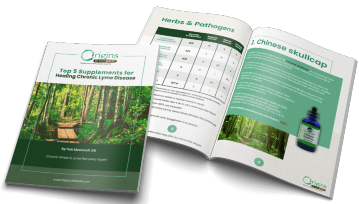And How Vitamin D Properly Supports Your Overall Health
Often, people don’t realize that sometimes the only medicine they need is a little more sunlight. Vitamin D deficiency is a common ailment that that is on the rise [1]. The reason? More and more people find themselves indoors rather than outside enjoying the sun.
Add to this the growing fear behind sun exposure and skin cancer, and more people seem to be going out of their way to avoid the sun. And yet this fear, like many others around vitamin D use, is misplaced. Just like the worry people have about sun exposure and skin cancer, people often misunderstand the facts about vitamin D. This article will cover the basics of vitamin D, so you can start taking steps to improve your health.
Can You Get All the Vitamin D You Need from Food?
While it is possible to get some vitamin D from certain types of foods, the best place source is from exposure to the sun [2]. Your body naturally generates Vitamin D when the sun’s UVB rays come into contact with exposed skin. Food can provide some vitamin D, but not as much as exposure to sunlight.
What Are the Symptoms of Vitamin D Deficiency?
There is a long range of symptoms people with vitamin D deficiency experience. Long-term deficiency can leave people to develop chronic illnesses that haunt them. These are a few of the symptoms:
- Frequent illness
- Fatigue
- Hair Loss
- Skin Problems
- Weight
- Slow Healing
- Body Aches
- Bone Pain
- Decreased Bone Density
- Depression
How Much Sunlight Do You Need to Create Vitamin D?
There are many variables that can create an impact on the amount of vitamin D your body can produce. Knowing these variables will help you make sure that you get the most out of your time in the sun.
- Skin type: People with lighter complexions have an easier time generating vitamin D. People with darker complexions need more exposure to sunlight because melanin interferes with the process.
- Geography: The more direct the sun’s rays are on your skin, the faster your body can create vitamin D. So, you’ll create vitamin D much faster when you’re closer to the equator or during summer months than living closer to the poles or during winter.
- Exposed skin: The more surface area you have exposed to direct contact with sunlight, the faster vitamin D production will be.
Will Sunscreen Prevent the Manufacturing of Vitamin D?
For the best possible outcome, you need large areas of skin exposed to the sun for your body to begin manufacturing vitamin D. Using sunscreen or only exposing your arms and face to sunlight will minimize production.
Do I need to Supplement with Vitamin D?
There are many different recommendations for what blood level of vitamin D you should have. They range from 30-100 ng/ml. Almost everyone agrees that below 20 ng/ml is bad, but not everyone agrees what the optimal level of D is. Several studies have found the lowest overall risk of death was in folks who kept their levels of D 30-50 ng/ml [4]. Many clinicians have found levels closer to 100 ng/ml significantly decrease the risk of getting the flu during the winter [5].
What Is the Recommended Daily Dose of Vitamin D?
In order to achieve optimal levels of Vitamin D, most people will need to supplement. The Vitamin D Council recommendation adults take 5,000 units of Vitamin D daily. The Institute of Medicine recommends taking no more than 4,000 units daily. The Endocrine Society Practice Guidelines state that up to 10,000 IU of vitamin D3 daily is safe for most adults [6]. Confused yet?
To make matters more complicated, there are many factors that impact how you utilize vitamin D. One person may need 5,000 units daily to achieve a blood level of 40 ng/ml. Another person may require 8,000 units daily. Rather than guess, check. A simple blood test can tell you what your levels are and help guide your healthcare practitioner in determining how much vitamin D you need to take each day.
Is It Possible to Overdose on Vitamin D?
While vitamin D toxicity is possible, it is rare. For this to occur, you would need either a sudden massive increase in Vitamin D (300,000 IU in the last 24 hours) or you would need to take a high dose of it for a prolonged time (10,000 IU a day for three months or longer) [].
How Can I Tell If I Have Vitamin D Toxicity?
Too much vitamin D can result in a medical condition known as hypercalcemia [8], a condition when there is a toxic level of calcium in your blood. Symptoms of hypercalcemia include:
- Abdominal, bone, or muscle pain
- Confusion
- Fatigue
- Feeling sick or thirsty
- Frequent urination
- Loss of appetite
Why Do I Need Vitamin D?
Aside from avoiding the side effects of vitamin D deficiency, there has been significant research illustrating that regular doses of vitamin D supports cognitive function [9]. As more and more of the population grows older, taking the necessary steps to avoid developing early onset dementia cannot be understated. Regular exposure to vitamin D and supplementation (when necessary) go a long way to supporting health and well-being over time.
Sources
- “Vitamin D Deficiency Is Widespread And On The Increase.” ScienceDaily, ScienceDaily, 6 July 2009, www.sciencedaily.com/releases/2009/06/090630143523.htm.
- “Office of Dietary Supplements – Vitamin D.” NIH Office of Dietary Supplements. U.S. Department of Health and Human Services, n.d. https://ods.od.nih.gov/factsheets/VitaminD-HealthProfessional/.
- How do I get the vitamin D my body needs? (n.d.). Retrieved from https://www.vitamindcouncil.org/about-vitamin-d/how-do-i-get-the-vitamin-d-my-body-needs/#.XBsA7s9KjBK
- Hossein-nezhad A, Holick MF. Vitamin D for health: a global perspective. Mayo Clin Proc. 2013;88(7):720-55.
- Schwalfenberg G. Vitamin D for influenza. Can Fam Physician. 2015;61(6):507.
- Tovey, A. & Cannell, JJ. How much vitamin D is needed to achieve optimal levels? The Vitamin D Council Blog & Newsletter, May 10, 2017.
- “Am I Getting Too Much Vitamin D?” Vitamin D Council, n.d. https://www.vitamindcouncil.org/about-vitamin-d/am-i-getting-too-much-vitamin-d/#.XBQntRNKjUI.
- How do I get the vitamin D my body needs? (n.d.). Retrieved from https://www.vitamindcouncil.org/about-vitamin-d/how-do-i-get-the-vitamin-d-my-body-needs/#.XBsA7s9KjBK
- Pavlovic, A, K Abel, C E Barlow, S W Farrell, M Weiner, and L F DeFina. “The Association between Serum Vitamin d Level and Cognitive Function in Older Adults: Cooper Center Longitudinal Study.” Current Neurology and Neuroscience Reports. U.S. National Library of Medicine, August 2018. https://www.ncbi.nlm.nih.gov/pubmed/29753804.



